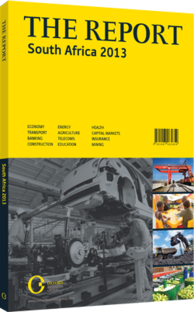Sasol: Integrated oil & gas
The Company
Sasol is an integrated oil and gas company with substantial chemical interests, headquartered in South Africa, where it has a leading 35% share of the country’s liquid fuels market. Its core business, historically, is the production of liquid fuels and chemicals from coal using Fischer Tropsch technology. Sasol also found and developed natural gas reserves in Mozambique in partnership with local government. This gas is mainly sent via a pipeline to South Africa where it is also fed into Sasol’s synthetic fuels and chemicals process, as well as being sold into the local industrial market. A major new business development for Sasol is its two $1bn shale gas joint ventures with listed Canadian company Talisman. Sasol plans to use gas from these to implement gas-to-liquids (GTL) plants in the US, and potentially Canada. Other Sasol South African energy businesses include coal mining (for internal use and exports), conventional oil refining and marketing, upstream oil and gas, and synthetic gas production and marketing.
Sasol produces a wide range of chemicals, including polymers, solvents, olefins and surfactants, and nitro-base chemicals. Its operations are located in South Africa, Europe, the US and Malaysia. Sasol’s profitability is driven by oil prices and the rand-to- dollar exchange rate, because liquid fuels prices in South Africa are regulated and linked to international product prices in dollars whereas Sasol’s cost base remains predominantly rand-based. As such, a weak rand but strong oil price is broadly positive for Sasol’s performance, and over the last 10 years the correlation between Sasol’s share price and the Brent oil price (denominated in rand) has been around 0.96.
We remain reasonably positive on Sasol’s investment case, given the supportive rand oil price environment based on our current assumptions, but remain cautious on Sasol’s ability to maintain operational stability at Sasol Synfuels, improve cost control and deliver growth projects on time and within budget. We calculate that Sasol expansion should account for one quarter of Sasol’s valuation, but we also expect the market to discount this value until management is regarded as credible in project delivery.
Development Strategy
Sasol’s core synthetic fuels business in South Africa is driven by maximising Synfuels production, cost control, energy efficiency and capacity expansion. Sasol looks to achieve this through improving its operational stability (through increased spend on maintenance), meeting its target of keeping cash-fixed cost-inflation below producer price index levels, increasing energy self-sufficiency though building gas-powered turbines and expansion of its capital expenditure programme.
Sasol primarily aims to grow internationally through establishing GTL footprints in areas where access to lower prices natural gas is possible. This strategy aims to take advantage of the continuing differential between oil and equivalent gas prices; Sasol effectively uses its technology to convert low-priced gas into higher priced transportation fuel. Sasol already operates a 34,000-barrel-per-day GTL facility in Qatar, and is looking to establish further facilities in Uzbekistan. Sasol’s North American expansion plans are its most ambitious, with a combined capital expenditure equivalent to the company’s current market capitalisation. Sasol intends on phasing these two projects, with the Ethane Cracker likely to be commissioned in 2014 and the GTL plant 18-21 months later.
Sasol also has significant expansion plans in chemicals where it can achieve a back-integrated feedstock position or is able to secure competitively priced feedstock. Sasol is, however, subject to a number of competition authority investigations in South Africa (including in polymers and diesel) which have yet to be resolved. Draft carbon tax legislation could also have a significant impact on Sasol, given carbon dioxide emissions at its Secunda operations are in excess of 60m tonnes per annum – we estimate the potential impact to be in the region of 7% on earnings, with a similar-magnitude impact on current valuation.
You have reached the limit of premium articles you can view for free.
Choose from the options below to purchase print or digital editions of our Reports. You can also purchase a website subscription giving you unlimited access to all of our Reports online for 12 months.
If you have already purchased this Report or have a website subscription, please login to continue.

